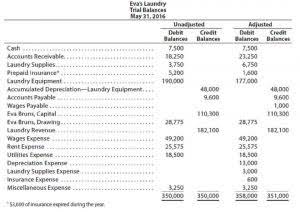
Recall, too, that revenues (inflows as a result of providing goods and services) increase the value of the organization. Retained earnings are not considered a current liability because they are not due to be paid in the short term. By recording profits in retained earnings, the company increases its assets and enhances its value without incurring debt.
Use an income statement to figure out your profit
- Taxes payable refers to a liability created when a company collects taxes on behalf of employees and customers or for tax obligations owed by the company, such as sales taxes or income taxes.
- This profit is often paid out to shareholders, but it can also be reinvested back into the company for growth purposes.
- Most corporations would use a full accrual basis of accounting such as U.S.
- The amount designated for a particular purpose is classified as appropriated retained earnings.
- A balance sheet is a key financial statement that provides a telling snapshot of what a company owns and owes, as well as revealing how much shareholders have invested in it.
- When a company conducts business, it will generate profits or losses.
For example, an auto manufacturer’s production facility would be labeled a noncurrent asset. Noncurrent assets are reported on the balance sheet at the price a company pays for them. It is adjusted for depreciation and amortization and is subject to being re-evaluated whenever the market price decreases compared to the book price. Answers gross vs net will vary but may include vehicles, clothing, electronics (include cell phones and computer/gaming systems, and sports equipment). They may also include money owed on these assets, most likely vehicles and perhaps cell phones.

What is Accounts Receivable Collection Period? (Definition, Formula, and Example)
Retained earnings are related to net (as opposed to gross) income because they are the net income amount saved by a company over time. The company released a year-end balance sheet for 2023 that detailed how its capital is spread across non-current assets. Current assets like cash equivalents and securities can easily be converted into cash. Non-current assets are also important for any company, but these assets take more than a year to convert into cash. They are long-term investments, while current assets represent short-term investments that can quickly turn into cash.
Examples of Non-Current Assets in Major Companies
Assume that the customer prepaid the service on October 15, 2019, and all three treatments occur on the first day of the month of service. We also assume that $40 in revenue is retained earnings current or noncurrent allocated to each of the three treatments. For example, assume the owner of a clothing boutique purchases hangers from a manufacturer on credit. The basics of shipping charges and credit terms were addressed in Merchandising Transactions if you would like to refresh yourself on the mechanics. Also, to review accounts payable, you can also return to Merchandising Transactions for detailed explanations.

See profit at a glance

Companies can further expand these formulas by separating cash and stock dividends. No, retained earnings are not a current asset for accounting purposes. A current asset is any asset that will provide an economic benefit for or within one year.
- Ask a question about your financial situation providing as much detail as possible.
- This category includes PP&E because they are tangible, which means they can be physically manipulated.
- The first part of the asset definition does not recognize retained earnings.
- Retained earnings are recorded in the shareholder equity section of the balance sheet rather than the asset section, and usually do not consist solely of cash.
- This process adds the profits or losses to the retained earnings balance.
- UPS purchased an additional $309 million in property, plant, and equipment in 2023.